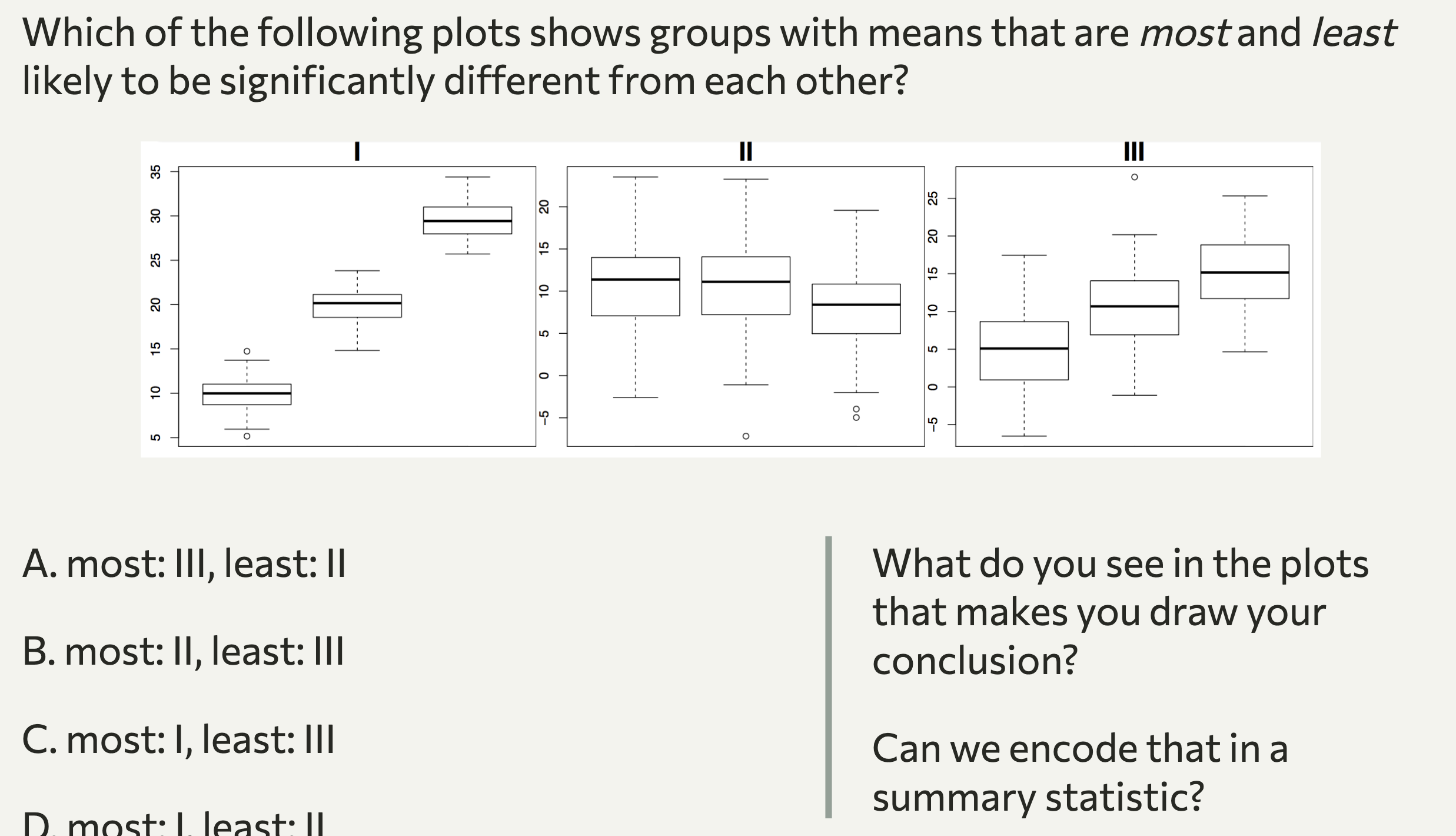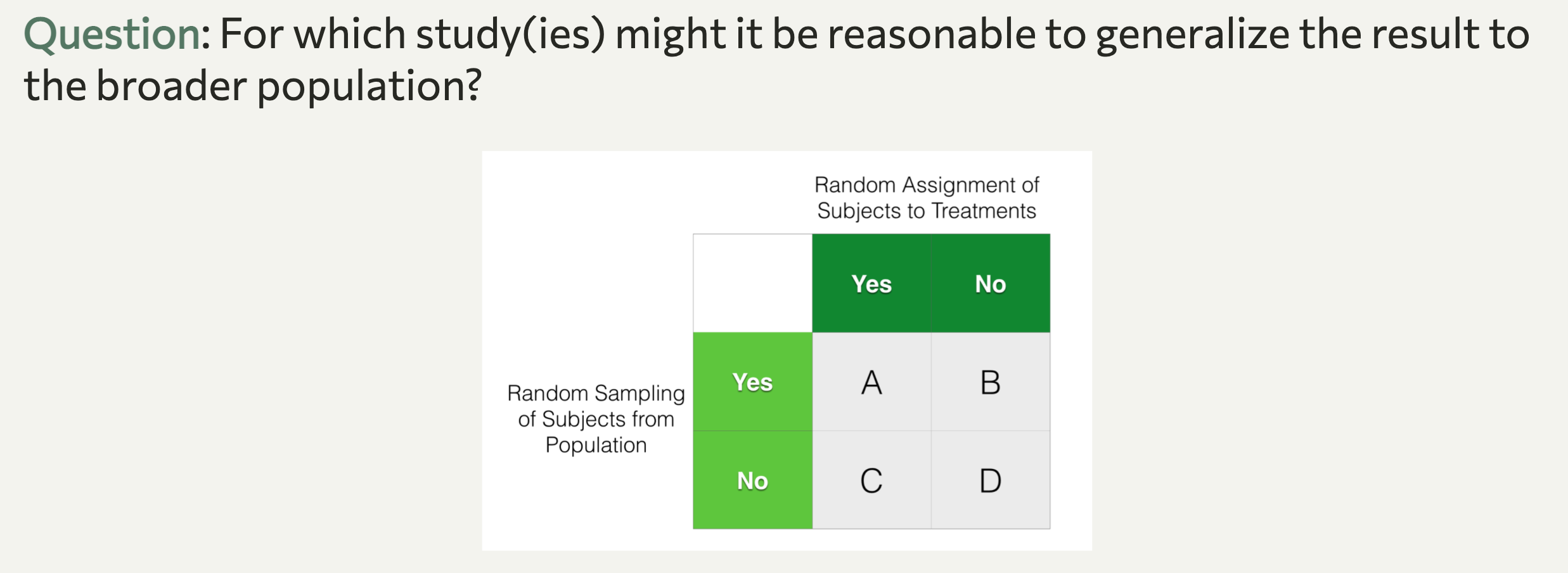10:00
Assessments
STAT 375 UC Berkeley
<<<<<<< HEAD:assessments/assessments-slides.qmd ## {}
======= >>>>>>> 2f4c839bc0cd6fdfbf76e696d381547bdcaaf525:slides/assessments-slides.qmd ## Agenda
- Assessments and Grading
- Types of assessments
- Goals of grading
- Alternate grading systems
- Break
- Writing good questions
Bloom’s Taxonomy
Question Workshop
<<<<<<< HEAD:assessments/assessments-slides.qmd
======= # Reflections from teaching
Reflections from teaching
In your groups, take turns sharing what active learning exercise you tried this last week in class and how it went. Otherwise, share:
- One thing that went well
- One thing that went poorly
- One thing you learned
2f4c839bc0cd6fdfbf76e696d381547bdcaaf525:slides/assessments-slides.qmd
Assessments and Grades
Three types of Assessments
Diagnostic
Formative
Summative
What do assessments look like?
Part I
Exams
Quizzes
Essays
Presentations
Part II
Labs
Projects
Quick writes
In class questions
Practice problems?
<<<<<<< HEAD:assessments/assessments-slides.qmd . . .
Assessments can be anything the instructor asks of the student to assess their level of understanding; opportunities provided to students to demonstrate their own understanding.
======= Assessments can be anything the instructor asks of the student to assess their level of understanding; opportunities provided to students to demonstrate their own understanding.
2f4c839bc0cd6fdfbf76e696d381547bdcaaf525:slides/assessments-slides.qmd
What are grades?
…the practically universal use in all educational institutions of a system of marks, whether numbers or letters, to indicate scholastic attainment of the pupils or students in these institutions… - I. E. Finkelstein
<<<<<<< HEAD:assessments/assessments-slides.qmd
# Disclaimer:
Disclaimer
2f4c839bc0cd6fdfbf76e696d381547bdcaaf525:slides/assessments-slides.qmd
The system of grading in your class is more or less out of your hands at the moment.
Purposes of Grading

- Grades as Feedback on Performance
- Grades as a Motivator of Student Effort
- Grades as a Tool for Comparing Students
- Grades as an Objective Evaluation of Student Knowledge
1. Grades as Feedback on Performance
What kinds of feedback are there? Does it work?
Feedback can be precriptive (here’s what you need to do) or evaluative (here’s where you’re at).
“the grade trumps the comment”
Unclear if comments are read and understood.
2. Grades as Motivator of Student Effort
Does it work? For whom?
- “Grades can dampen existing intrinsic motivation, give rise to extrinsic motivation, enhance fear of failure, reduce interest, decrease enjoyment in class work, increase anxiety, hamper performance on follow-up tasks, stimulate avoidance of challenging tasks, and heighten competitiveness”
- “Perhaps at best, grading motivates high-achieving students to continue getting high grades—regardless of whether that goal also happens to overlap with learning. At worst, grading lowers interest in learning and enhances anxiety and extrinsic motivation, especially among those students who are struggling.”
<<<<<<< HEAD:assessments/assessments-slides.qmd
- “Perhaps at best, grading motivates high-achieving students to continue getting high grades—regardless of whether that goal also happens to overlap with learning. At worst, grading lowers interest in learning and enhances anxiety and extrinsic motivation, especially among those students who are struggling.” >>>>>>> 2f4c839bc0cd6fdfbf76e696d381547bdcaaf525:slides/assessments-slides.qmd
3. Grades as Tool for Comparing Students
Does it work? What are the side-effects?
Competition between students inhibits overall learning.
Curved grades no longer reflect mastery.
4. Grades as an Objective Evaluation of Student Knowledge
When does it work? When doesn’t it?
Objective (MC questions) grading as fair but artificial.
Subjective grading of writing very inconsistent between and within instructors.
Rubrics help.
PI-style Question
Recall the structure of a PI Question.
<<<<<<< HEAD:assessments/assessments-slides.qmd ::: nonincremental ======= :::nonincremental >>>>>>> 2f4c839bc0cd6fdfbf76e696d381547bdcaaf525:slides/assessments-slides.qmd 1. Solo think and poll 2. Discuss with table. Move if no disagreement. 3. Repoll 4. Share as class :::
Prepare to poll: pollev.com/stat20
<<<<<<< HEAD:assessments/assessments-slides.qmd ## {.smaller} =======

| >>>>>>> 2f4c839bc0cd6fdfbf76e696d381547bdcaaf525:slides/assessments-slides.qmd |
| :::: columns ::: {.column width=“47%”} ### Model A <<<<<<< HEAD:assessments/assessments-slides.qmd ======= |
| Students are given written feedback on assignments instead of grades. At the end of the course, they get a written summary. >>>>>>> 2f4c839bc0cd6fdfbf76e696d381547bdcaaf525:slides/assessments-slides.qmd |
| Students are given written feedback on assignments instead of grades. At the end of the course, they get a written summary. ::: ::: {.column width=“6%”} ::: ::: {.column width=“47%”} ### Model B <<<<<<< HEAD:assessments/assessments-slides.qmd ======= |
| Students are only given feedback, not grades, while taking a course. They have the option, though, of registering for a separate examination by an external evaluator. >>>>>>> 2f4c839bc0cd6fdfbf76e696d381547bdcaaf525:slides/assessments-slides.qmd |
| Students are only given feedback, not grades, while taking a course. They have the option, though, of registering for a separate examination by an external evaluator. ::: ::: |
| :::: columns ::: {.column width=“47%”} ### Model C |
| Students get feedback on assignments but the grades are hidden from them until the completion of the course. At 8 weeks, they’re notified whether or not they’re on track to pass the course. ::: ::: {.column width=“6%”} ::: ::: {.column width=“47%”} ### Model D |
| Students are given a grade on every assignment and the rubric for evaluation is made completely transparent. They know their progress at all times. ::: :::: |
| ::: {.cell} ::: {.cell-output-display} |
{=html} <div class="countdown" id="timer_2b06c3ea" data-warn-when="10" data-update-every="1" tabindex="0" style="right:0;bottom:0;font-size:0.5em;"> <div class="countdown-controls"><button class="countdown-bump-down">−</button><button class="countdown-bump-up">+</button></div> <code class="countdown-time"><span class="countdown-digits minutes">00</span><span class="countdown-digits colon">:</span><span class="countdown-digits seconds">30</span></code> </div> |
| ::: ::: |
| <<<<<<< HEAD:assessments/assessments-slides.qmd |
| ## {.smaller} |
| :::: columns ::: {.column width=“47%”} ### Model A |
| Students are given written feedback on assignments instead of grades. At the end of the course, they get a written summary. ::: ::: {.column width=“6%”} ::: ::: {.column width=“47%”} ======= |
Model A
Students are given written feedback on assignments instead of grades. At the end of the course, they get a written summary.
Model C
Students get feedback on assignments but the grades are hidden from them until the completion of the course. At 8 weeks, they’re notified whether or not they’re on track to pass the course.
2f4c839bc0cd6fdfbf76e696d381547bdcaaf525:slides/assessments-slides.qmd ### Model B
Students are only given feedback, not grades, while taking a course. They have the option, though, of registering for a separate examination by an external evaluator.
Model C
Students get feedback on assignments but the grades are hidden from them until the completion of the course. At 8 weeks, they’re notified whether or not they’re on track to pass the course.
Model D
Students are given a grade on every assignment and the rubric for evaluation is made completely transparent. They know their progress at all times.
08:00
<<<<<<< HEAD:assessments/assessments-slides.qmd ## Poll Results
## Repoll Results
2f4c839bc0cd6fdfbf76e696d381547bdcaaf525:slides/assessments-slides.qmd
Break
05:00
Writing Good Questions
Bloom’s Taxonomy

Example 1

Which levels of the hierarchy are tested by the following question? What must students know to answer it?
Example 2

Which levels of the hierarchy are tested by the following question? What must students know to answer it?
Example 3

Which levels of the hierarchy are tested by the following question? What must students know to answer it?
Questions to ask
What other questions should you ask yourself when you’re writing questions? <<<<<<< HEAD:assessments/assessments-slides.qmd :::
- Which level of the hierarchy is being assessed?
- What must students know to answer it?
- How could a student misinterpret this question?
- Can a student answer this question if they got a previous one wrong?
- How long will this question take to answer?
- How long will this question take to grade?
### Question workshop part I
- Which level of the hierarchy is being assessed?
- What must students know to answer it?
- How could a student misinterpret this question?
- Can a student answer this question if they got a previous one wrong?
- How long will this question take to answer?
- How long will this question take to grade?
Question workshop part I
2f4c839bc0cd6fdfbf76e696d381547bdcaaf525:slides/assessments-slides.qmd
With the people at your table, take turns sharing your question and addressing
- The concept(s) that it assesses.
- The form of inquiry it assesses based on Bloom’s.
- What you like / dislike about the question.
- Where/how a student could misinterpret the question.
- How difficult it will be to grade.
10:00
Question workshop part II
Select one of your groups question as a candidate for revisions.
- Upload the question to the google doc.
- Rewrite the question into a second version that is more challenging.
- Rewrite the question into a third version that is less challenging.
Link to the google doc: shorturl.at/btvF9

06:00
